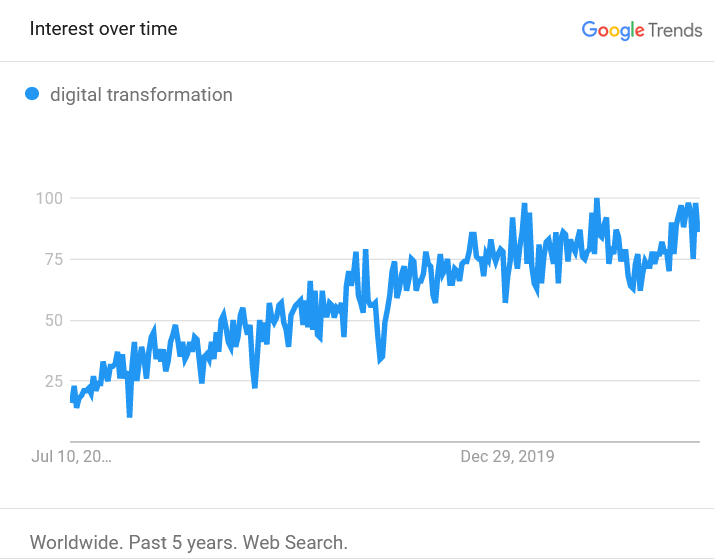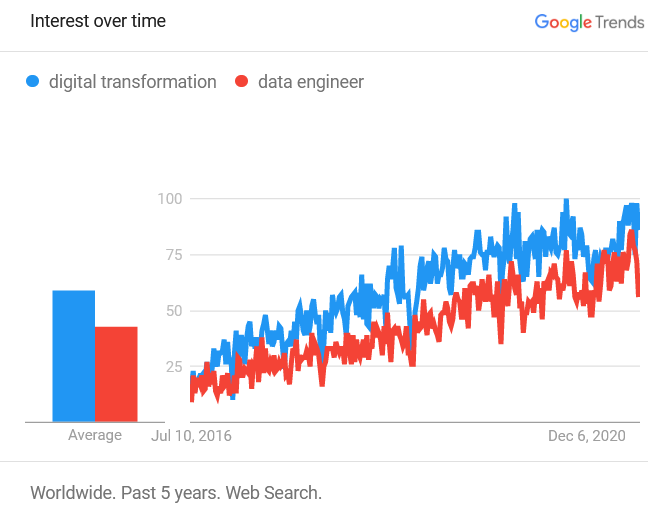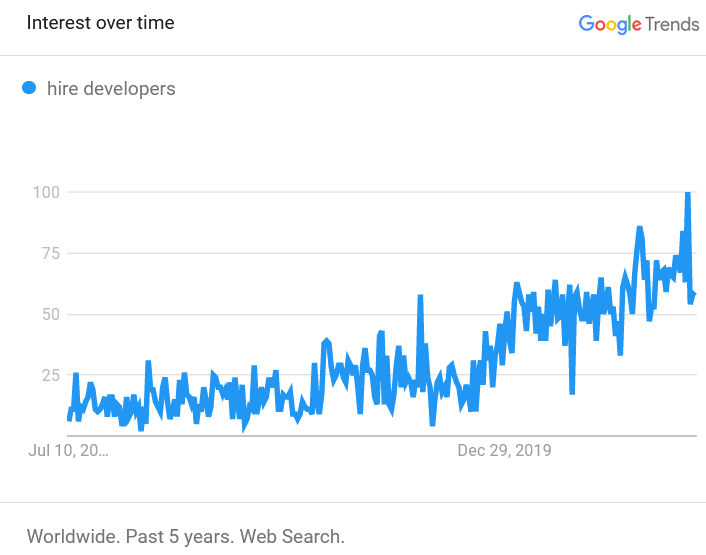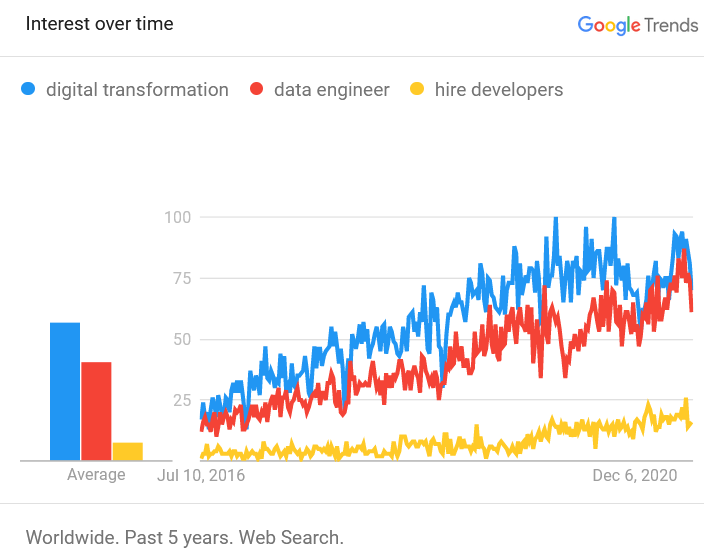What’s the outlook for digital transformation in a post-pandemic world?
Demand for transformation-related technology services was strong during the acute phase of the COVID-19 pandemic, driven by rapid adoption of remote working and schooling, contactless payments, streaming services, gaming, among many other areas.
“It was hard to imagine,” as The Information’s Laura Mandaro (subscription) put it, “the financial bounty distanced living would hold for the tech industry.”
While new coronavirus variants may trigger further social and economic disruptions on a country and regional basis, promising signs suggest further acceleration in digitalization, including notable investments in data, AI and automation.
Gartner’s $4 trillion 2021 IT spending forecast sets a stratospheric ceiling for the IT services sector. With the consulting firm’s July projection update next week, the question seems to be, how much higher can the bar be raised?
Searching for answers in plain sight
We looked for signals in Google trends data, where we found striking signals of market intent, characterized by breakthrough interest in keywords topics closely aligned with the business problematic of digitalization.
Our analysis found intriguing patterns of search behavior around keywords such as “digital transformation,” “data engineer” and “hire developers,” where search volume has surged to 5-year highs, eclipsing pandemic declines to set new benchmarks.
For example, Google Trends data shows that search volume around “digital transformation” has recently spiked to a 5-year high.

Here we see a trend line breaking through a series of fluctuations correlated with moments of COVID-19 uncertainty. In other words, looking over the long terms we see that search volume was flat to lower during the first year of the pandemic. We have now risen to the next level.
At Pentalog, we’ve talked about how smart investments in tech will separate the post-pandemic winners and losers. A recent Deloitte survey also found CEO prioritizing digital transformation to seize opportunities and promote resilience.
To amplify our view of this intent, we chose a strongly related term, “data engineer,” to gauge more contextual interest. Here we see surging interest in a term that has again, risen to a historic peak.
The plot thickens when we compare these two terms side by side and see them racing other horses down the track. Given the need for data engineering in the types of transformation initiatives seen during the pandemic, this is hardly a surprise.

Of course, without software engineers, digital transformation is just a slogan. Which makes it interesting to look again at Google Trends for clues about hiring intent. To get a sense of hiring intent, we chose to analyze the keyword “hire developers” as this is a typical search from managers looking to staff IT projects.

Looking at the last five years, we again see record highs by mid-April. We also see high volume (and high volatility) during the acute period of the pandemic, which again seems to make the trend noteworthy. This kind of data is in sync with the facts on the ground.
“Hiring developers is going to be your next big problem,” TechRepublic recently quipped, underscoring the significant challenges faced by hiring managers charged with onboarding technical talent to support transformation initiatives.
Now let’s combine these views together and compare the shape of the lines.

While volume for “digital transformation” and “data engineer” dwarfs “hire developers,” the clustering of these search trends is hard to ignore. This volume begins before the pandemic, and despite volatility, remains strong throughout the period. Now it’s accelerating.
This visual correspondence illustrates the reality of the global developer shortage. Frustration is too often the “user experience” of managers struggling to fill open software positions – a widening gap which industry observers say threatens to dampen innovation.
These strong trends in volume are matched by corresponding increases in average bid prices, with keyword prices at or above 12-month levels.
Google Trends data predicts the present
How much confidence can we have in using Google Trends for forecasting, especially with the simple model we have outlined? Ultimately, it’s more about predicting the present. Finding patterns in search data says more about present intentions than real-world outcomes, yet those patterns can still be a powerful tool for forecasting economic trends.
So, what’s next? All eyes will be on Gartner’s predictions for the remainder of 2021. In a scarcity market, companies looking to drive digital transformation projects will need to find new ways to onboard talent and new partners to support sustained value delivery.
Also read:
[eBook] 2021 Tech Expectations & Trends
Why Smart IT Investment Leads the Way to Post-Recession Growth










